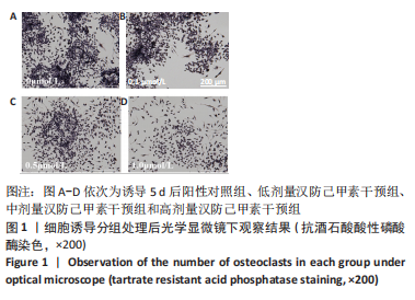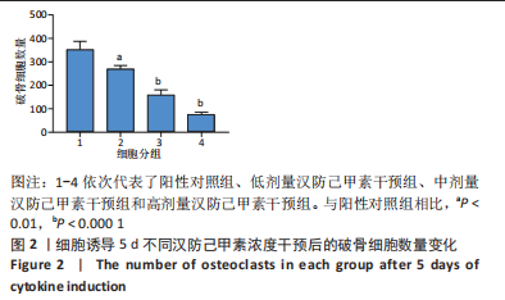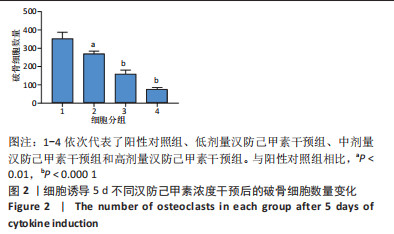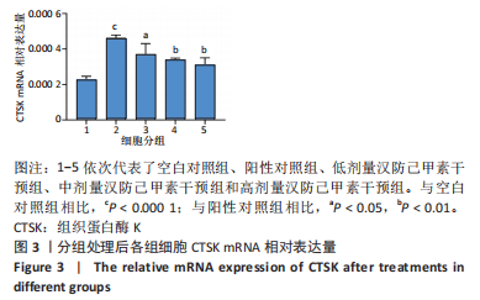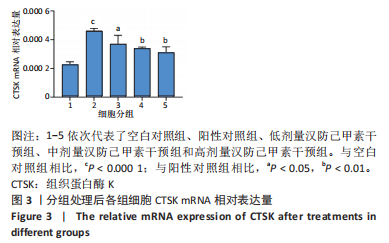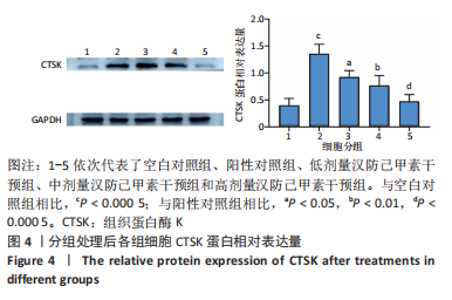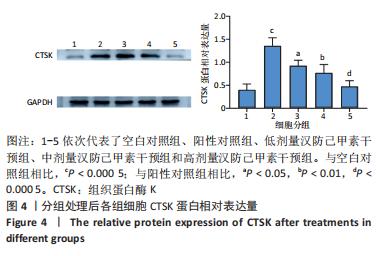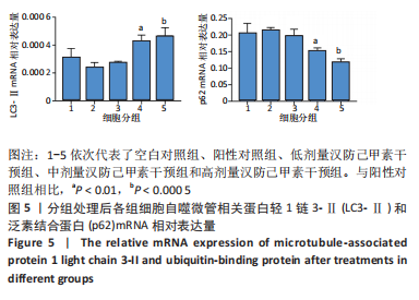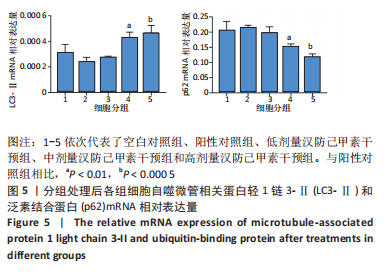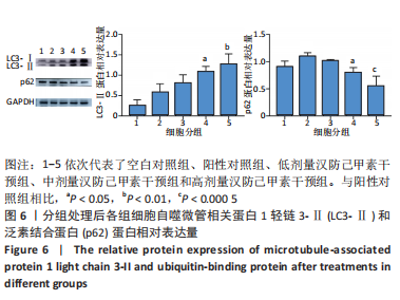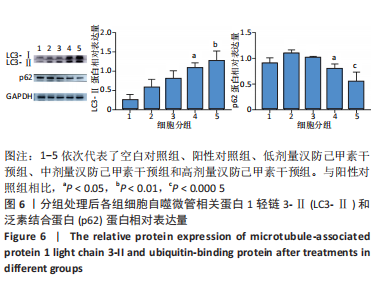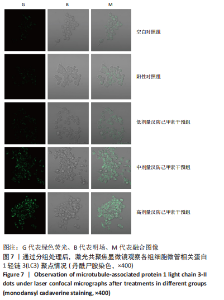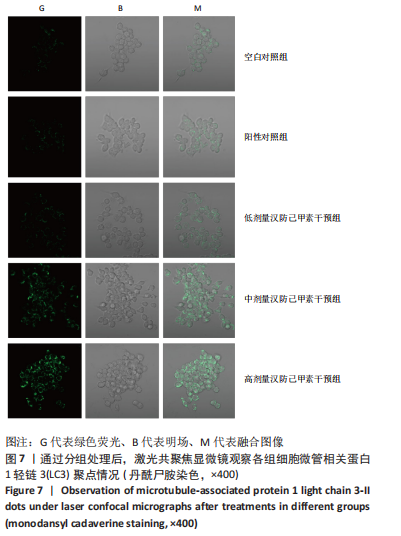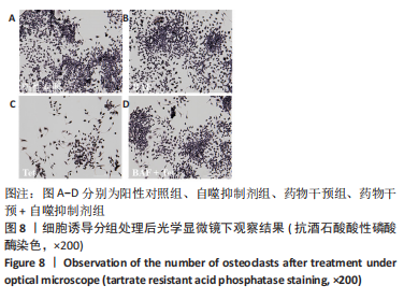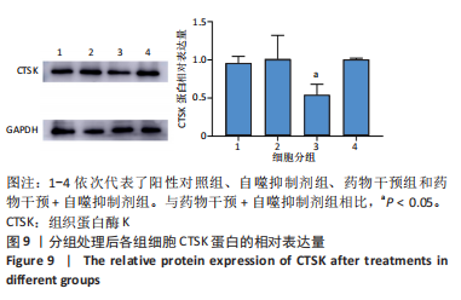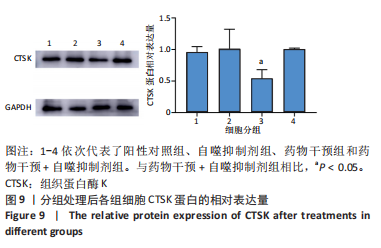[1] BOYCE BF. Advances in the regulation of osteoclasts and osteoclast functions. J Dent Res. 2013;92(10):860-867.
[2] YAHARA Y, NGUYEN T, ISHIKAWA K, et al. The origins and roles of osteoclasts in bone development, homeostasis and repair. J Development. 2022;149(8):dev199908.
[3] 张帆,梁清洋,韩超,等.Wnt /β-catenin信号通路调控成骨细胞、破骨细胞在骨质疏松中的作用探讨[J].中国骨质疏松杂志,2021, 27(10):1540-1544.
[4] 沙力塔娜提·乌尔曼别克,李亦丞,任姜栋,等.青蒿琥酯改善软骨下骨破骨细胞介导的骨关节炎疼痛[J].中国组织工程研究,2020, 24(17):2636-2641.
[5] 王冰格,农晓琳.糖尿病通过影响成-破骨细胞活性加重牙周炎病理进程的研究进展[J].实用口腔医学杂志,2020,36(3):526-529.
[6] 张晓非,吕震,王小泉,等.人工关节假体周围无菌性松动的发生机制[J].天津医药,2020,48(6):572-576.
[7] CUERVO AM, BERGAMINI E, BRUNK UT, et al. Autophagy and aging: the importance of maintaining “clean” cells. J Autophagy. 2005;1(3):131-140.
[8] HERMANOVA I, CARRACEDO A. CK1α promotes tumour suppressive autophagy. J Nat Cell Biol. 2018;20(4):369-371.
[9] 郭梅,许洁.PI3K/Akt/mTOR信号通路在环境内分泌干扰物诱导甲状腺滤泡上皮细胞凋亡与自噬中的研究进展[J].中华劳动卫生职业病杂志,2021,39(9):717-720.
[10] 孔晓旭,左红艳,李杨.粉防己碱的药理作用及临床应用研究进展[J].国际药学研究杂志,2020,47(7):496-501.
[11] 席苑,张海静,叶祖光,等.汉防己甲素现代药理作用研究进展[J].中国中药杂志,2020,45(1):20-28.
[12] 赵雪强,蒋碧佳,银建华,等.肺癌A549细胞诱导RAW264.7破骨细胞分化中AMPK信号通路的作用[J].现代肿瘤医学,2021,29(17): 2952-2955.
[13] 李丽,陈菲,包春娟,等.TRAP染色与免疫组化套染技术在骨组织损伤修复染色中的应用[J].临床与实验病理学杂志,2021,37(5): 622-623.
[14] 陈松峰,寇红伟,尚国伟,等.Necrostatin-1对压力诱导的髓核细胞自噬及凋亡的影响[J].中华实验外科杂志,2021,38(5):878-881.
[15] 李战宁,孟宏涛,焦杨,等.维生素D受体在骨动态平衡中的调节作用[J].中国骨质疏松杂志,2014,20(11):1366-1370.
[16] CONAGHAN PG, BOWES MA, KINGSBURY SR, et al. Disease-Modifying Effects of a Novel Cathepsin K Inhibitor in Osteoarthritis: A Randomized Controlled Trial. J Ann Intern Med. 2020;172(2):86-95.
[17] YANG Y, MA F, LIU Z, et al. The ER-localized Ca2+-binding protein calreticulin couples ER stress to autophagy by associating with microtubule-associated protein 1A/1B light chain 3. J Biol Chem. 2019;294(3):772-782.
[18] 陈苗苗,仝锡帅,郑嘉铭,等.氨基咪唑-4-甲酰胺核苷酸对破骨细胞自噬和分化的影响[J].畜牧兽医学报,2019,50(11):2339-2347.
[19] 祝震亚,童蕾,陆燕群.miR-181a调控PINK1/Parkin通路对骨质疏松大鼠破骨细胞线粒体自噬的影响[J].解放军医学杂志,2022, 47(6):569-578.
[20] LUO T, FU X, LIU Y, et al. Sulforaphane Inhibits Osteoclastogenesis via Suppression of the Autophagic Pathway. J Molecules. 2021;26(2):347.
[21] FU L, WU W, SUN X, et al. Glucocorticoids Enhanced Osteoclast Autophagy Through the PI3K/Akt/mTOR Signaling Pathway. J Calcif Tissue Int. 2020;107(1):60-71.
[22] ZHOU Y, WANG Z, HUANG Y, et al. Membrane dynamics of ATG4B and LC3 in autophagosome formation. J Mol Cell Biol. 2022;13(12):853-863.
[23] TURCO E, WITT M, ABERT C, et al. How RB1CC1/FIP200 claws its way to autophagic engulfment of SQSTM1/p62-ubiquitin condensates. J Autophagy. 2019;15(8):1475-1477.
[24] 张倩,韩婕,汤旭磊.不同浓度白藜芦醇对破骨细胞分化的影响及自噬的作用[J].中国骨质疏松杂志,2020,26(4):564-569+594.
[25] 田涛,傅强,朱健奎,等.二至丸治疗斑马鱼骨质疏松模型效益观察及破骨细胞自噬机制[J].南京中医药大学学报,2020,36(3):352-357.
[26] PENG F, DU Q, PENG C, et al. A Review: The Pharmacology of Isoliquiritigenin. J Phytother Res. 2015;29(7):969-977.
[27] LUAN F, HE X, ZENG N. Tetrandrine: a review of its anticancer potentials, clinical settings, pharmacokinetics and drug delivery systems. J Pharm Pharmacol. 2020;72(11):1491-1512.
[28] ZHENG Y J, LI X, SUN L, et al. Therapeutic effect of dihydroartemisinin on pulmonary fibrosis in rats with dust.Zhonghua Lao Dong Wei Sheng Zhi Ye Bing Za Zhi.2019;37(2): 96-103.
[29] 孙世永.补肺活血胶囊联合汉防己甲素片治疗煤工尘肺病人疗效观察[J].中医临床研究,2019,11(31):17-19.
[30] 吴飞飞,郭明.汉防己甲素对缺氧缺糖损伤BV2细胞炎症反应的影响[J].中国临床药理学杂志,2020,36(10):1350-1352.
[31] 范为民,赵春江.基于JAK通路探讨汉防己甲素改善佐剂性关节炎大鼠滑膜血管新生的机制[J].中药新药与临床药理,2018,29(6): 725-730.
[32] 刘子歌,刘心蕊,李燕,等.汉防己甲素干预假体周围磨损颗粒诱导下骨溶解模型的体外实验[J].中国组织工程研究,2021,25(15): 2358-2363.
[33] MATSUMOTO N, NAKANISHI-MATSUI M. Proton pumping V-ATPase inhibitor bafilomycin A1 affects Rab7 lysosomal localization and abolishes anterograde trafficking of osteoclast secretory lysosomes. J Biochem Biophys Res Commun. 2019;510(3):421-426.
[34] MATSUMOTO N, SEKIYA M, SUN-WADA GH, et al. The lysosomal V-ATPase a3 subunit is involved in localization of Mon1-Ccz1, the GEF for Rab7, to secretory lysosomes in osteoclasts. J Sci Rep. 2022; 12(1):8455.
|
